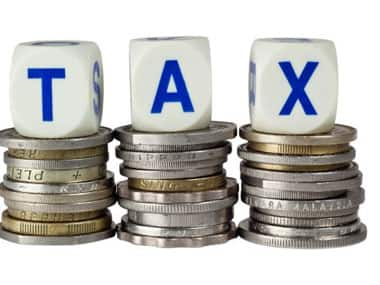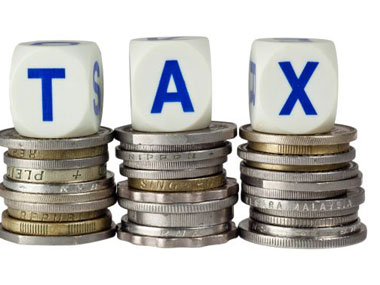(This story is the third in a multiple-part series explaining the government’s sources of revenues, expenditure and fiscal deficits. For earlier stories, click here and here ).
Budget 2012 will see the government depending more on non-tax revenues than tax revenues to show revenue growth. There is very little room for tax cuts in either direct or indirect taxes, although hikes are possible in indirect taxes.
India’s fiscal deficit for 2011-12 is slated to increase by one percentage point from budgeted levels of 4.6 percent of GDP to 5.6 percent of GDP. One of the primary reasons for the fiscal deficit trending higher than budget estimates is a shortfall in tax collections.
Direct taxes
Tax collection data for the ten months to January 2012 shows that direct tax collections have grown by 9.2 percent against the budgeted growth of 20 percent for the financial year ending March 2012.
Direct tax collections account for around 56 percent of total tax collections. Direct tax includes corporation tax and individual income tax, with corporation tax at almost twice the rate of income tax. Direct tax rates in India, at over 30 percent, are among the highest in the world.
[caption id=“attachment_237364” align=“alignleft” width=“380” caption=“The central government’s tax-to-GDP ratio at 10 percent has not grown over the years, indicating that the government has not been able to widen its tax net to cover a larger portion of population.”]
 [/caption]
[/caption]
The central government’s tax-to-GDP ratio at 10 percent has not grown over the years, indicating that the government has not been able to widen its tax net to cover a larger portion of population.
India’s central plus state government tax-to-GDP ratio at around 16 percent is less than half the average of the OECD’s (Organisation for Economic Co-operation and Development) tax-to-GDP ratio, which is at around 34 percent.
The fact that a small part of the population accounts for a big chunk of the country’s revenues is a big negative as small swings in economic growth can cause a large shortfall in tax revenues.
The low tax-to-GDP ratio prevents the government from reducing taxes to induce more of the country’s population to pay tax. In an environment in which the government is not able to contain its deficit between revenues and expenditure, the ability of the government to take bold steps in widening the tax base and lower tax rates is low. Hence, expecting any tax reductions in Budget 2012 is wishful thinking.
Indirect taxes
Indirect taxes, which include excise duty, customs duty, service tax and the securities transaction tax, account for around 44 percent of total tax revenues.
Indirect tax collection has been closer to target with a 15 percent growth in the April-January 2011-12 period against a budgeted growth of 18 percent for the current financial year.
Indirect taxes in India are subject to complicated laws and this leads to tax evasion. The government is looking to introduce the GST (goods and service tax) to simplify the indirect tax structure, but negotiations between states and the center, which have been dragging for over two years, are still continuing (the GST cannot be introduced without the consent of states).
The ability of the government to lower excise and custom duties is low in the current environment of a higher fiscal deficit. The government may increase excise duties in some items to lift indirect tax revenues.
Tax take and GDP growth
Tax revenues are a function of GDP growth. The higher the GDP growth, the higher the tax revenues.
If you want proof, consider the 260 percent jump in tax revenues between 2002-03 and 2010-11. India’s GDP growth averaged 7.9 percent during that period, the best on record over a nine-year period.
The downward revision of GDP growth from 9 percent to 7.5 percent and below by the government for the current financial year is reflected in the lower tax collection figures. To some extent inflation helps, especially in indirect tax collection as higher prices of goods and services leads to higher tax collections.
Inflation has trended at more than 9 percent for most of 2011-12, and that has helped indirect tax collection growth. However, tax revenues should grow because of sustainable GDP growth, not inflation.
The non-tax revenues of the government include dividends from the RBI and government owned corporations, which account for more than 50 percent of non-tax revenues, excluding one-off items such as telecom spectrum auctions. The government has also been nudging state-owned firms to hand out more dividends this year in an attempt to improve its (government’s) strained finances.
Other forms of revenues
On the capital receipts side, the sale of shares in government-owned enterprises is an important source of revenues. The ongoing ONGC fiasco, where the government had to push through the equity sale to raise around Rs 12,400 crore, shows how desperate the government is to raise revenues through disinvestments. The targeted proceeds from disinvestment were Rs 40,000 for fiscal 2011-12, of which only Rs 12,400 has been collected. The government was unsuccessful the year earlier on its disinvestment target as well, raising only Rs 22,700 crore against the budgeted target of Rs 40,000 crore.
The government may be more successful in raising non-tax revenues in the new financial year as it will auction the cancelled 2G telecom licenses; the auction of 4G telecom licenses is also accepted.
Equity markets have been looking up since January and will aid the government’s disinvestment process and should lead to higher disinvestment revenues. Telecom spectrum auctions, along with higher disinvestment proceeds, will improve non-tax revenue growth and help keep the fiscal deficit in check.
Arjun Parthasarathy is the editor of www.investorsareidiots.com , a web site for investors.
Arjun Parthasarathy has spent 20 years in the financial markets, having worked with Indian and multinational organisations. His last job was as head of fixed income at a mutual fund. An MBA from the University of Hull, he has managed portfolios independently and is currently the editor of www.investorsareidiots.com </a>. The website is for investors who want to invest in the right financial products at the right time.
)